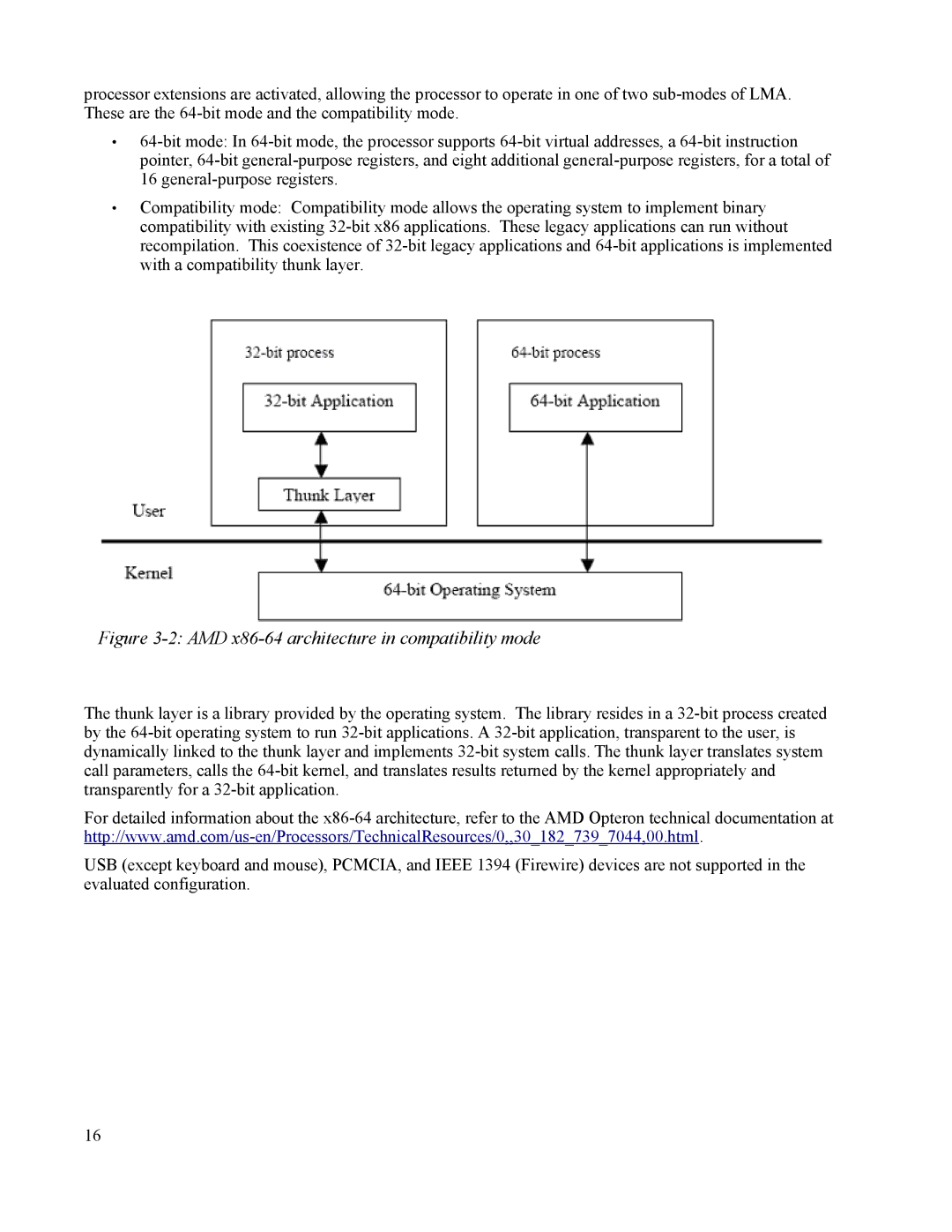
processor extensions are activated, allowing the processor to operate in one of two
•
•Compatibility mode: Compatibility mode allows the operating system to implement binary compatibility with existing
Figure 3-2: AMD x86-64 architecture in compatibility mode
The thunk layer is a library provided by the operating system. The library resides in a
For detailed information about the
USB (except keyboard and mouse), PCMCIA, and IEEE 1394 (Firewire) devices are not supported in the evaluated configuration.
16
